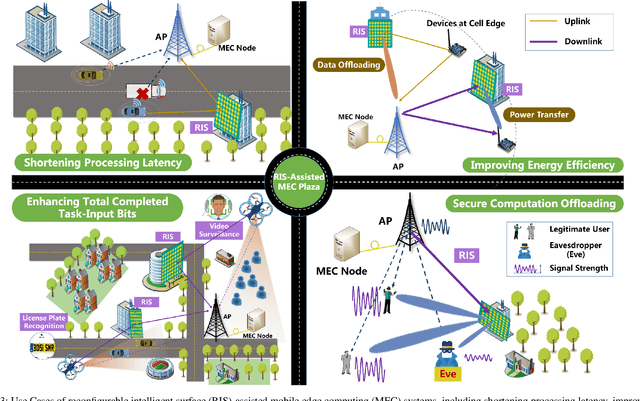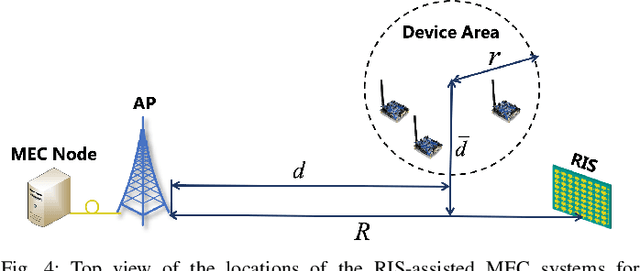Tong Bai
Empowering Mobile Edge Computing by Exploiting Reconfigurable Intelligent Surface
Feb 04, 2021



Abstract:Along with the proliferation of sensors and of smart devices, an explosive volume of data will be generated. However, restricted by their limited physical sizes and low manufacturing costs, these wireless devices are typically equipped with limited computational capabilities and battery lives and thus incapable of processing data time-efficiently. To overcome this issue, the paradigm of mobile edge computing (MEC) is proposed, where wireless devices may offload all or a fraction of their computation tasks to their nearby computing nodes deployed at the network edge. At the time of writing, the benefits of MEC systems have not been fully exploited, predominately because the computation offloading link is still far from the perfect. In this article, we propose to empower the MEC systems by exploiting the emerging technique of reconfigurable intelligent surfaces, which is capable of reconfiguring the wireless propagation environments and hence of enhancing the offloading links. The beneficial role of RISs can be exploited by jointly optimizing both the RISs as well as communications and computing resource allocations of MEC systems, which imposes new research challenges on the systemic design and thus necessitates a specific investigation. Against this background, this article provides an overview of RIS-assisted MEC systems and highlights their four use cases as well as their design challenges and solutions. Then their advantageous performance is validated with the aid of a specific case study. Finally, a guide on future research opportunities is elucidated.
Scale Optimization for Full-Image-CNN Vehicle Detection
Feb 20, 2018



Abstract:Many state-of-the-art general object detection methods make use of shared full-image convolutional features (as in Faster R-CNN). This achieves a reasonable test-phase computation time while enjoys the discriminative power provided by large Convolutional Neural Network (CNN) models. Such designs excel on benchmarks which contain natural images but which have very unnatural distributions, i.e. they have an unnaturally high-frequency of the target classes and a bias towards a "friendly" or "dominant" object scale. In this paper we present further study of the use and adaptation of the Faster R-CNN object detection method for datasets presenting natural scale distribution and unbiased real-world object frequency. In particular, we show that better alignment of the detector scale sensitivity to the extant distribution improves vehicle detection performance. We do this by modifying both the selection of Region Proposals, and through using more scale-appropriate full-image convolution features within the CNN model. By selecting better scales in the region proposal input and by combining feature maps through careful design of the convolutional neural network, we improve performance on smaller objects. We significantly increase detection AP for the KITTI dataset car class from 76.3% on our baseline Faster R-CNN detector to 83.6% in our improved detector.
 Add to Chrome
Add to Chrome Add to Firefox
Add to Firefox Add to Edge
Add to Edge